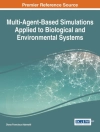The micro- and nano-modification of infrastructure materials and the associated multi-scale characterization and simulation has the potential to open up whole new uses and classes of materials, with wide-ranging implications for society. The use of multi-scale characterization and simulation brings the ability to target changes at the very small scale that predictably effect the bulk behavior of the material and thus allowing for the optimization of material behavior and performance.
The International RILEM Symposium on Multi-Scale Modeling and Characterization of Infrastructure Materials (Stockholm, June 10-12, 2013) brought together key researchers from around the world to present their findings and ongoing research in this field in a focused environment with extended discussion times. From asphalt to concrete, from chemistry to mechanics, from nano- to macro-scale: the collection of topics covered by the Symposium represents the width and depth of the currently ongoing efforts of developing more sustainable infrastructure materials.
Researchers, practitioners, undergraduates and graduate students engaged in infrastructure materials or multi-scale characterization and modeling efforts can use this book as a comprehensive reference, to learn about the currently ongoing research efforts in this field or as an inspiration for new research ideas to enhance the long-term performance of infrastructure materials from a fundamental perspective.
The Symposium was held under the auspices of the RILEM Technical Committee on Nanotechnology-Based Bituminous Materials 231-NBM and the Transport Research Board (TRB) Technical Committee on Characteristics of Asphalt Materials AFK20.
Table of Content
Preface.- Fracture toughness testing aspects for assessing low temperature behaviour of bituminous binders.- Evaluating the representative volume element of asphalt concrete mixture beams for testing in the bending beam rheometer.- Linear elastic properties prediction of cementitious composites with aggregate size distributions taken into account.- Multi-scale characterization of bituminous mastics.- Integrating physicochemical and geochemical aspects for development of a multi-scale modelling framework to performance assessment of cementitious materials.- Investigation on mechanical properties of bituminous materials through 2D/3D finite element numerical simulations.- Challenges while performing AFM on Bitumen.- A preliminary numerical study on ITZ in cementitious composites.- Improvement of the test method for determining moisture damage resistance.- Mode II Cracking Failure in Asphalt Concrete by Using A Non-conserved Phase Field Model.- Asphalt Internal Structure Characterization with X-Ray computed Tomography and Digital Image Processing.- Evaluation of Anti-clogging Property of Porous Asphalt Concrete using Microscopic Voids Analysis.- Representative Volumes for Numerical Modeling of Mass Transport in Hydrating Cement Paste.- Exploring the observed rheological behaviour of in-situ aged and fresh bitumen employing the colloidal model proposed for bitumen.- Effect of film thickness of aspahlt mixture in compression test.- Insulating Pavements to Extend Service Life.- Prediction of linear viscoelastic behaviour of asphalt mixes from binder properties and reversal.- A 3D/2D comparion between heterogeneous mesoscale models of concrete.- Meso-scale Analysis Considering Effect of Fiber Inclination in Fiber Reinforced Cementitious Composites.- Development of an Adherence Energy Test via Force-Displacement Atomic Force Microscopy (FD-AFM).- Multi-scale framework to optimize ageing resistance of asphaltic materials.- Effects of nano-sized additives on the high-temperature properties of bituminous binders: a comparative study.- Differential Scanning Calorimetry applied to bitumen: Results of the RILEM NBM TG1 Round Robin test.- Review of Multiscale Characterization Techniques and Multiscale Modeling methods for Stone-based Materials: from Atomistic to Continuum.- Effects of various modifiers on rheological property of asphalt.- Coupled creep and damage model for concrete at moderate temperatures.- Mitigating Resolution Problems in Numerical Modeling of Effective Transport Properties of Porous Materials.- A 3d image correlation algorithm for tracking movement of aggregates in x-ray ct images of asphalt mixtures captured during compaction.- Research into Applications of Acrylic Fibres in Porous Asphalt: Laboratory, Numerical and Field Study.- Finite element modeling of rejuvenator diffusion in RAP binder film – simulation of plant mixing process.- Micromechanical Simulation of Asphalt Concrete Permanent Deformation.












